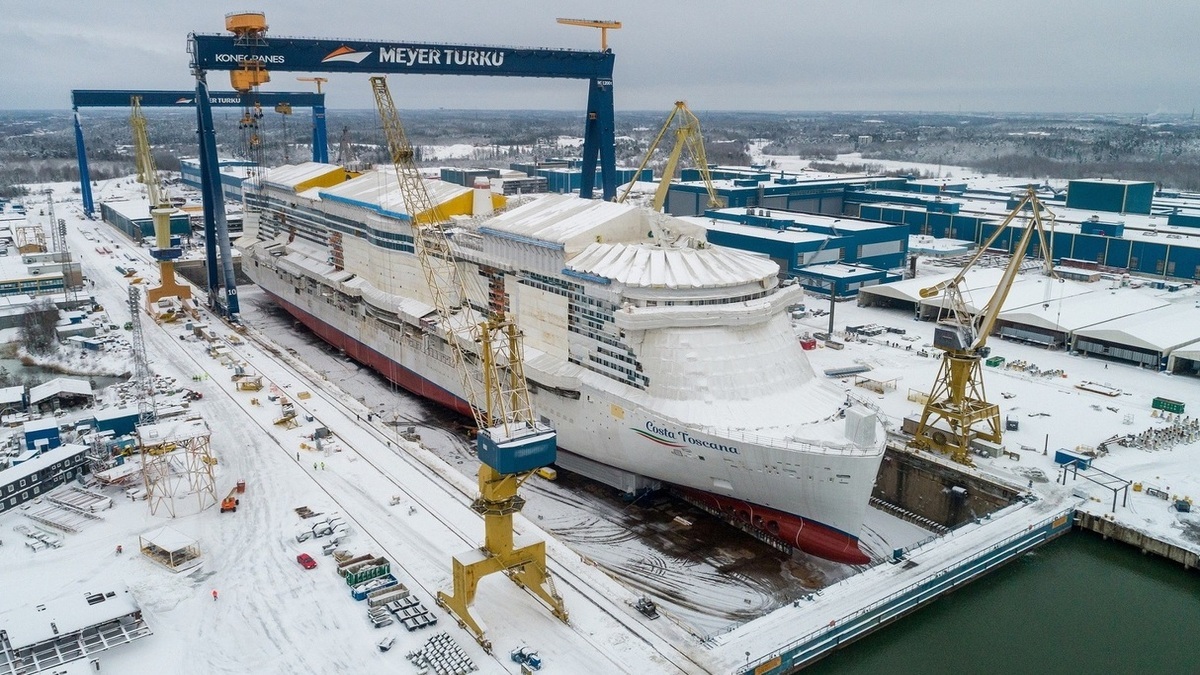Costa Toscana floated out at Meyer Turku shipyard.

Costa Toscana is the third of five LNG-powered newbuilds ordered by Costa Group for its subsidiary lines. Two other vessels, Costa Smeralda and AIDAnova have already entered service. They are part of an expansion plan that includes seven new ships to be delivered to Costa Group by 2023, for a total investment of more than €6Bn (US$7.27Bn).
Costa said the vessel has been designed to be a travelling ’smart city.’ The use of LNG is expected to eliminate sulphur dioxide emissions and reduce particulate matter into the atmosphere by over 90% while also lowering nitrogen oxide up to 85% and CO2 emissions by up to 20%.
Desalinisation plants on board will process seawater directly to meet the vessel’s daily water supply requirements, and energy consumption will be reduced to a minimum via an intelligent energy efficiency system. In addition, 100% separate collection and recycling of materials such as plastic, paper, glass and aluminium will be carried out onboard, as part of an integrated approach aimed at supporting circular economy projects.
The vessel’s design was curated by hospitality designer Adam D Tihany who worked with Milanese architects Dordoni Architetti, New York-based Jeffrey Beers International and cruise ship specialist Partner Ship Design in designing different areas of the ship. Costa Toscana features Italian-made furnishings, lighting, fabrics and accessories.
At the heart of the new flagship is the Colosseo – a three-deck-high, midship-located show lounge featuring large LED screens mounted on its walls and dome. The vessel features 2,600 cabins for its occupants and the Sea Terrace cabins offer a verandah with a view of the ocean.
Costa Cruises chief commercial officer and president of Costa Group Asia, Mario Zanetti said "Despite the current challenging scenario, Costa Group is confirming its investment in fleet expansion. We are confident in the recovery of our industry, and we are excited about the arrival of new ships like Costa Toscana, which embodies the elements we want to focus on for the future.”
Meyer Turku chief executive Tim Meyer said "The float-out is always a very special occasion for us shipbuilders, as the ship is finally set to its natural environment. As this is also the start of the final stage of shipbuilding, all the exciting colours, venues and features will start taking their final form. In the coming months it will be finalised at the pier and then tested and commissioned in Q3 for delivery. "
Once interior fittings have been completed, Costa Toscana will make its maiden voyage in Brazil in the 2021-22 cruise season departing Santos on 26 December 2021, with a week-long itinerary visiting Salvador and Ilhéus, before returning to Santos on 2 January 2022.



















